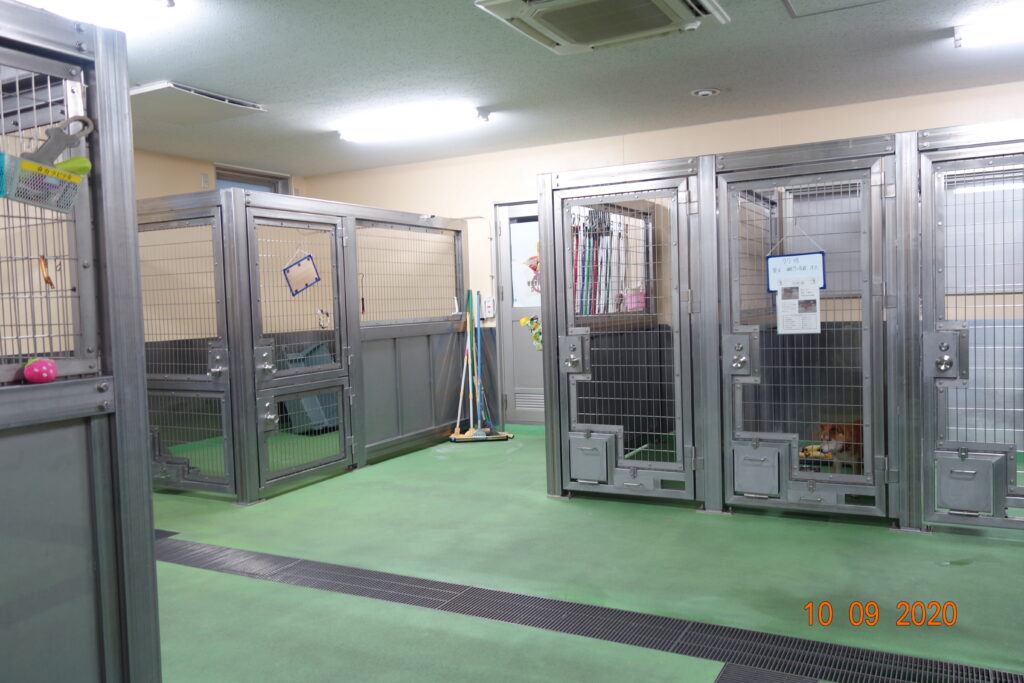One of the reasons for the decrease in killing in Japan is because of national and local action.
1. The country is on the move!
・Amendments to the Animal Welfare and Control Act
The Animal Protection and Control Act was enacted in 1973, which was the basis for the current Animal Protection and Control Act.Prior to this law, there was no comprehensive law for animal welfare and control.However, the enactment of the Act was prompted by the social problem of dog bites and the fact that Japan was lagging behind other countries in terms of animal welfare policy.
Since then, the law has been amended several times to accommodate new issues.
In particular, the 2019 amendments have made the Animal Protection and Control Act more specific.
・What exactly has changed?

● It is a rule that pet shops cannot be opened without registration.
It was said that the registration of first-class animal handling businesses such as pet shops that violated the regulations was canceled and registration was not possible for 2 years, but with the revision of the law in 2019, the period will be extended to “3 years”. I was struck.

After that, a study group was held by the Ministry of the Environment, and in 2020, concrete figures were issued.
For example,
•For breeding that is a burden for mother dogs and cats, both dogs and cats can be bred up to 6 years old.
・ The maximum number of dogs sold at pet stores is 20 per employee, and the maximum number of cats is .
It was presented with specific numbers such as, and it became easier for the country to crack down.
Enforcement is scheduled for 2021.
Source From the website of the National Pet Association
2. the region has moved on!
A major reason for this is that the local areas have moved along with the country.
・The Animal Welfare Education Center was established.
In Hamamatsu, the Hamamatsu City Animal Protection and Education Center was established in 2014with the goal of making Hamamatsu a “city for kind citizens”.

Philosophy of the Hamamatsu City Animal Protection and Education Center
- To spread awareness of animals and the idea of valuing animal life.
- To teach people how to treat animals properly and to cultivate a rich heart with love and kindness.
- Reduce the number of unattended dogs and cats and promote a city.
Source: From the website of the Hamamatsu City Animal Protection Education Center
Mr. Shirosawa, who works at the Animal Protection and Education Center, told us about it.

Q.what are the main jobs at Animal Protection andEducation Center.

A. Mainly,
1. Handing over dogs and cats and holding a handover event.
2. Registration and supervision of animal handling businesses such as pet shops.
3. Permission for the keeping of specified animals and guidance and supervision.
4. Guidance and supervision of the breeder of a complaint.
5. Taking in dogs and cats that can no longer be kept.
6. Protection of injured animals.
7. Holding training classes.
We are doing.

Q. Where do you take dogs and cats that are taken in for reasons such as no longer being able to keep them, or dogs and cats that are injured and taken into care?

A. The process after pickup and shelter is different for dogs and cats.
For dogs

In the case of dogs, it is said that there are no stray dogs in Japan now.
However, a protected dog is “someone’s dog”.
Therefore, it is the same idea as “lost item”, so it is essential to contact the police.
For cats

In the case of cats, it is said that there are stray cats, so you do not need to contact the police.

Q. Doesn’t the Center for Protection and Education kill animals.

A. I have not done. The Hamamatsu Education Center takes in dogs and cats that have been rescued or taken in.
1. Difficult to correct personality and habits.
2. You have a disease that is difficult to treat.
3. Cannot eat food by himself.
Our job is to make a determination based on such factors as.

Q. What is the difference between an animal welfare education center and a conservation organization?

A.The biggest difference is that shelters can be driven by emotions, whereas the Animal Protection and Education Center
・Rabies prevention method
・The Act on Welfare and Management of Animals
This is where we are working in accordance with the two laws of

Q. What are the contents of the Rabies Prevention Act and the Animal Care and Control Act?

A. The Rabies Prevention Act is a law to prevent rabies, which is transmitted from dogs to humans, and to protect people.
It includes a mandatory annual rabies vaccination and the registration of the dog within 30 days of obtaining it.
The Animal Welfare and Control Act is designed to promote the spirit of animal welfare and to control animal-related businesses.
It includes mandatory registration and microchipping for pet shops and other businesses.

Q. From the standpoint of working under the law, what do you think is the reason for the decrease in animal killings?

A. I think the opening of the new petting center in Hamamatsu has brought us closer to the people of the city and has given us a place to take care of rescued dogs and cats.
In addition, the amendment of the Law on Welfare and Management of Animals resulted in stricter regulations on breeders and pet shops, which prevented the collapse of polysaccharide farming.
More importantly, I think it is also important that people are becoming more aware of the concept of lifelong breeding (keeping a pet until the end of its life).

Q. Are there any changes that need to be made in the two current laws?

A. There are many.
For example, mandatory microchipping is important, but it doesn’t mean you are 100% safe once you wear it. The information in the microchip is useless if you don’t regularly update the information in the microchip.
In a real-life example, we rescued a dog that was roaming the streets of Hamamatsu, and when we checked the microchip, the address registration was in Kyoto Prefecture. Thinking it was impossible for the dog to walk such a distance, we called the phone number on the registration and it said that the dog had been given away to someone else. However, in some cases, we were unable to find the owner because we couldn’t remember exactly to whom we had given the dog away.
In such cases, the dog is “someone’s property” because it is microchipped, which complicates ownership and makes it impossible to transfer the dog.

Q. Is there anything that the Hamamatsu Animal Protection and Education Center needs to change in the future?

A. Of course there is.
For example, in terms of facilities, I would like to keep them in a larger room. I think it would be a good environment if we could separate the toilet and sleeping areas for them.
However, if we have a lot of space for each dog and cat, the number of cats and dogs we can house will be limited.

Q. Is there anything you would like to see the public do from the standpoint of working at the animal welfare center?

A. There are many.
I want them to see things from different angles, not just look at one side of things and judge them from one side, for example, not just respecting the opinions of people who like animals, but also respecting the ideas of people who don’t like them.
I also want them to value their relationship with the community. This is just a tendency, but I feel that people who feed stray cats are often isolated from their surroundings.
By valuing communication with local people, we can stop the increase in the number of stray cats due to irresponsible feeding.

The state of the shelter
This photo was taken by 5th grade students
*Please refrain from reprinting them.

The dog’s characteristics are described in detail.
Photo of 5th grade students
*Please do not reprint.
● Feeling.

The government works with the tax dollars of us citizens.
Not everyone agrees when it comes to spending the tax money we work so hard to pay for the breeding of dogs and cats.
But there are those who say why we are killing them.
We want to save as many lives as possible while respecting the opinions of people from all walks of life and still being under the law.
Through our interviews, we felt the strong desire of the government officials to save lives.

